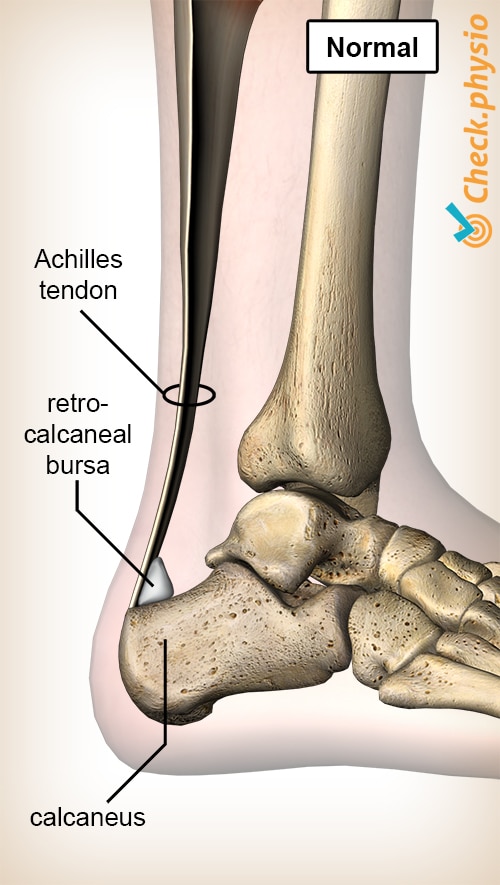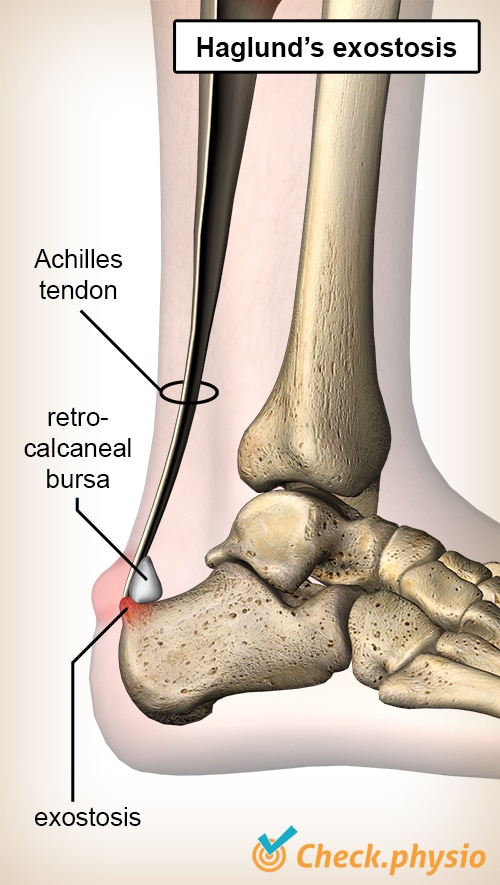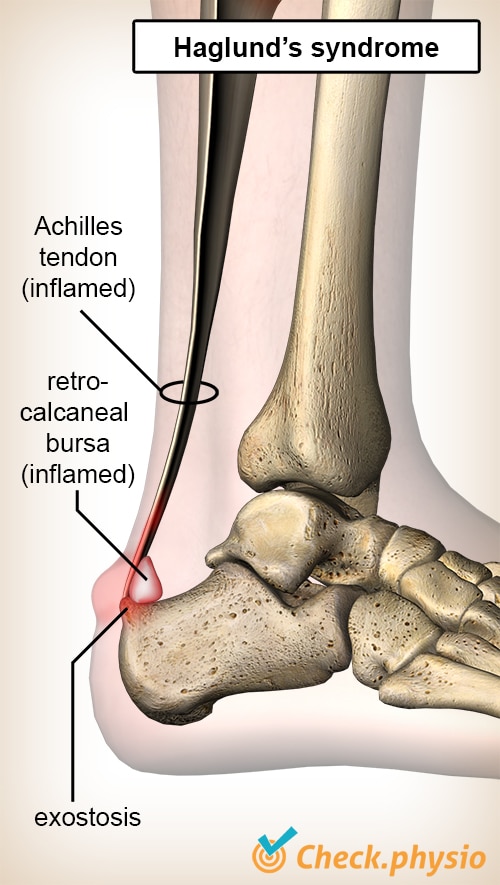Haglund's exostosis
Haglund's deformity / Haglund's syndrome / Haglund's disease
Haglund's exostosis is a bone protrusion at the back of the heel bone. This protrusion is formed by external pressure and causes pain in the heel.

Haglund's exostosis often occurs in people who wear ice skates or shoes with a hard heel cap. Bursitis and Achilles tendonitis are also frequently observed in people with Haglund’s exostosis.
Description of the condition
Haglund's exostosis owes its name to a Swedish orthopaedic surgeon who was the first to describe this condition. It is an abnormal bone growth at the back of the heel. Such abnormal bone growth is also called exostosis. Exostosis can cause annoying symptoms at the back of the heel bone.
Between the heel bone and the Achilles tendon is bursa, the retrocalcaneal bursa. When, in addition to the exostosis, this bursa and the Achilles tendon itself are also inflamed, this is referred to as Haglund's syndrome.
Cause and origin
Haglund's exostosis is usually caused by excessive pressure on the heel through uncomfortable footwear. Think of shoes where the heel cap is hard and stiff and presses against the heel. As a reaction to this pressure, the bone starts to thicken locally and forms a protruding hump.
The bursa, which is located between the heel bone and the Achilles tendon, can then become inflamed due to increased friction. This causes the bursa to swell and there is a chance that it presses against the Achilles tendon which, in turn, also becomes irritated.
The condition occurs more often in people with a high foot arch (arched foot), people who skate a lot and in young women who wear tightly fitting pumps. Because people wear the same shoe on the left and right side, this condition often occurs on either side.
Signs & symptoms
The symptoms associated with Haglund's exostosis and/or Haglund's syndrome are:
- A painful, hard swelling on the heel.
- Red discolouration of the heel.
- A painful and thickened Achilles tendon.
- Pressure on the exostosis aggravates the symptoms.
- The symptoms worsen when wearing ill-fitting footwear and diminish when walking barefoot or with slippers.
Diagnosis
Haglund's exostosis is usually easy to recognise by physical examination and by looking at the footwear. An X-ray can be taken to confirm the diagnosis, but it does not always show the exostosis clearly.
Treatment
The treatment of Haglund's exostosis is initially quite simple. The pressure must be taken off the painful area. This can be done by removing the dent from the heel cap of the shoe or by buying shoes with a softer heel cap.
The potential presence of bursitis can be treated with an anti-inflammatory medicine or injection. If the Achilles tendon is also affected, it should also be treated. There are various treatment methods available (see Achilles tendinopathy).
If all else fails and the symptoms persist, surgery can be performed. If there is only exostosis, the bone spur will be removed during surgery. Just to be sure, some more bone is removed, because healing bone has a tendency to grow back excessively. This creates a risk of recurring symptoms.
If it is Haglund's syndrome, the bursa is also removed in addition to the bone spur and the Achilles tendon is 'cleaned'. In the latter case, recovery takes longer and can take several months.
Exercises
You can check your symptoms using the online physiotherapy check or make an appointment with a physiotherapy practice in your area.


References
Nugteren, K. van & Winkel, D. (2009). Onderzoek en behandeling van de voet. Houten: Bohn Stafleu van Loghum.
Verhaar, J.A.N. & Linden, A.J. van der (2005). Orthopedie. Houten: Bohn Stafleu van Loghum.




